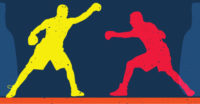Improving the Pack-Screening Process
Implementing these tips can help brands get the most from research.

Direct side-by-side comparisons of packaging options can be misleading, as they tend to force preferences and overstate differences among options.

Direct side-by-side comparisons of packaging options can be misleading, as they tend to force preferences and overstate differences among options.

Direct side-by-side comparisons of packaging options can be misleading, as they tend to force preferences and overstate differences among options.

By instilling a shopping mindset and showing new concepts within a shelf context, we can reduce people’s tendency to “art-direct” in qualitative research.

The PRS Retail Lab, which includes both physical store aisles and virtual capabilities, allows for on-shelf screening of new packaging concepts.





At PRS, we are fortunate to partner with many leading CPG companies on packaging validation. If there’s one question that we are asked most frequently, it is some variation of the following: “How can we increase the likelihood that new packaging systems meet action standards and are recommended for introduction?” This is the right question for marketers, designers and researchers to ask themselves, because higher success rates reflect a better use of resources on redesign efforts that lead to better packaging on shelf.
There are many potential answers, but without question, effective screening processes are critical to driving success. Companies need to ensure that they consistently identify the most promising new design directions and ultimately bring the strongest options into validation testing. In our experience, it’s here that teams often fall into common patterns that lead to the wrong decisions.
HOW SCREENING CAN MISLEAD
How can screening research lead teams astray? We’ve seen several recurring issues:
1. Overstating differences
The most frequent problem is one of magnitude. It’s rare that screening research will identify a new package that it is later completely rejected by shoppers in a subsequent study. But it is far too common for teams to walk away from qualitative research believing they have a major win, only to later find out that a new package does little to move the needle versus its competition.
2. Missing problems at the shelf
Screening research often identifies new concepts that are quite strong aesthetically or functionally but are later found to be visually recessive on shelf — or worse, create shopper confusion — both of which typically lead directly to sales declines.
3. Failing to convey the proposition
For new products, screening often brings us packaging concepts that are compelling upon consideration, yet they fail to quickly/clearly convey their proposition and differentiate from competition upon first view.
4. Understating price/value concerns
For new shapes, sizes and structures, screening can occasionally miss or understate price/value concerns, which are often top-of-mind for shoppers as they encounter new packaging systems.
WHY Research Can Mislead
These issues or limitations are rooted in several factors common to screening research, whether it takes the form of qualitative focus groups or quantitative web-based surveys:
1. The absence of shelf context
While pack-screening research frequently includes competition, it rarely takes place within shelf context. Thus, it is not surprising that on-shelf concerns tied to visibility and shopability are often missed or understated. The absence of shelf context makes it difficult to gauge whether proposed changes are significant enough to make a difference from three feet away, which is often critical to driving sales.
2. The reliance on comparative questioning
Whether qualitative or web-based, pack screening research frequently centers upon direct comparisons of different options. While comparisons can often reveal insights about specific design elements, they can also be quite misleading. By presenting a scenario that shoppers would never encounter in store (seeing many different packs for the same brand), comparisons take people out of a shopping mindset. As a result, shoppers tend to focus on what they like and “art-direct” along these lines (“Make the logo bigger. Use that shade of green.”). And while this feedback may be honest and well-intentioned, it has a very limited connection to their in-store shopping behaviors.
By forcing preferences and winners, another problem can come up: Comparisons lead shoppers to overstate differences among options. Comparisons may often generate impressive statistics (“Seventy-six percent of shoppers favor design B over the current package.”). However, they don’t give us an accurate sense if a new design system would truly make a difference in terms of brand imagery or shopping behavior if it replaced the current pack on shelf. Thus, they tend to force winners when the reality may be that no design systems truly meet objectives.
3. The shortcuts on stimuli
Often, screening studies take place with renderings, 2D visuals or virtual stimuli, because clients are not yet able to commit the resources for physical package comps. In some cases, such as proposed changes in graphics or on-pack messaging, this may be perfectly acceptable. But it becomes problematic when screening new pack structures, techniques (embossing, foils) or added-value features which are more likely to impact functionality and price/value perceptions. If there is one truism of packaging research, it is that the research is only as good as the stimuli.
IMPROVING THE SCREENING PROCESS
Given the wide range of issues that marketers face at the screening stage, there’s no way that a single methodology can address all situations. For example, we may use a qualitative-quantitative approach to gather feedback on 20-25 different pack structures, while a web-based quantitative survey may be more appropriate for identifying the strongest of four to five different on-pack claims. While in-depth interviews (IDIs) are often optimal later in the design process, a triad or mini-group context may be more effective earlier to gather feedback on a wider range of concepts. But across these different circumstances, it is valuable to keep the following guiding principle in mind for screening research: The better aligned that screening and validation research are (in terms of stimuli, methodology and key metrics), the more likely that their findings will align.
In other words, if the intent is for winning designs from screening studies to also succeed in validation, we should start by pursuing greater consistency between the studies. To the extent possible, we should be asking shoppers the same questions and focusing on the same core criteria, by:
1. Starting at the shelf
Shoppers should first encounter new packaging systems within shelf context, as they do in validation studies (and in store). This simple best practice accomplishes many things at once, as it:
- Grounds people in the shopping context, and thus promotes the appropriate mindset for reacting to new packaging
- Provides immediate perspective, in terms of whether packaging options are noticeably different
- Helps ensure a discussion of important on-shelf criteria that link to in-market sales performance (visibility and shopability)
And while some issues, such as shelf visibility, can’t be accurately measured on a qualitative basis (or a computer screen), shelf presence should be explored throughout the pack development and screening process.
2. Focusing on the first few seconds
We all know that packaging has a very limited window — often five seconds or less — to make a visceral connection and convey its branding, proposition and point-of-difference. Thus, screening research needs to address and emphasize immediate communication rather than allowing shoppers to overanalyze packaging options. While extended probes (to understand the “why” behind reactions) have diagnostic value, it is important to begin with a clean read on shoppers' comprehension of, and reactions to, new concepts.
3. Establishing clear success criteria
Often, the underlying objectives of a design effort can get lost at the screening stage, in the midst of hearing what shoppers like. Thus, it is important to remain grounded in the design brief and establish clear criteria for selecting concepts to bring into validation. In other words, it is often more important to identify (and refine) the design that best conveys a certain message or image, as opposed to the one that consumers find most pleasing. And across studies, marketers and researchers need to change their mindset from identifying concepts that people like towards uncovering those likely to make a difference in store or home.
4. Avoiding the wrong questions
Marketers also need to resist the temptation to ask questions that are likely to generate misleading responses, such as:
- Would you pay more for this feature or benefit?
- Would you be likely to notice this package on shelf?
- Do you find this package confusing?
If asked, shoppers will dutifully, and sometimes eagerly, respond to these questions, to the best of their abilities. But these are issues best addressed by observing shoppers’ actual behavior at the shelf: what they see/miss, what they pick up and what they purchase.
5. “Listening but not believing”
Finally, to paraphrase Mauro Porcini, PepsiCo’s chief design officer, we need to listen to shoppers but not necessarily believe them. Consumer input should not be taken literally at face value but rather interpreted and balanced with creativity and strategy. It should influence but not mandate design decisions. This is particularly critical at the screening stage, when a primary objective is to uncover the underlying drivers of why certain pack elements or messages resonate with shoppers — and to apply this insight to further enhance packaging.
At PRS, we’ve long-applied these core principles to screening research by incorporating shelf presence when possible — and complementing traditional qualitative and quantitative methods with eye tracking. Today, we’re taking this a step further via the recent opening of the PRS Retail Lab. This facility includes both physical store aisles and virtual capabilities to allow for on-shelf screening of new concepts, even when physical prototypes are not yet available. In addition, PRS Mobile Eye-Tracking allows us to document exactly how shoppers first engage with product categories and packages, to uncover differentiation on shelf and initial communication. At the Retail Lab, we are using many of the same tools and metrics from validation studies at the screening stage. And simply put, the approach is working, as we’ve documented a significant increase in success rates.
DRIVING SUCCESS
It’s important to note that success is dependent on having both a strong screening process and the right set of concepts. With that thought in mind, we can share several guidelines based on our experience across categories.
1. Bring a strong range of options to screening
Too often, we find that clients narrow their scope of exploration prematurely based upon their own comfort level and/or feedback from senior management. Or, they rush to gather numbers early in the process before concepts have been fully developed/optimized, which also leads towards safer and more evolutionary changes.
As a result, teams end up testing several variations on the same theme and/or “talking to themselves” with changes that aren’t noticeable or meaningful to the shopper. Thus, as a rule of thumb, we recommend including a range of fundamentally different directions at the screening stage with the objective of identifying two to three finalist concepts for validation. It is better to go too far and learn from it than to never push the limits.
2. Link design with messaging
Without question, a compelling new design can positively impact appeal, personality and brand imagery, just as a new feature can provide a meaningful functional benefit. But to make a difference at shelf and drive purchase, marketers need to consistently link these graphic and structural innovations with strong on-pack messages highlighting the benefit and/or conveying news.
A new appearance may drive a second look from non-users, but it will rarely close sales on its own. Similarly, an on-pack message may be needed to reassure current users and mitigate risk. Therefore, marketers need to ensure that design and messaging are being developed and screened in parallel.
3. Invest in structural innovation
Across brands, categories and countries, we’ve repeatedly seen that new packaging structures are more likely to impact purchase patterns than graphic design changes alone. That’s because new structures can have a dramatic impact across many key performance dimensions: shelf presence, brand imagery, price/value perceptions, functionality and usage frequency. Although new structures do typically require a larger investment, they are also a high-return proposition.
By employing these best practices throughout the packaging development process and changing their mindset and methodology at the screening stage, marketers can consistently bring stronger packaging concepts into validation — and ultimately drive more wins in both testing and in market.
Scott Young is the president of Perception Research Services International (www.prsresearch.com), a company that conducts more than 800 packaging and shopper research studies annually to help marketers “win at retail.” He can be reached at syoung@prsresearch.com or 201-720-2701.
Looking for a reprint of this article?
From high-res PDFs to custom plaques, order your copy today!











